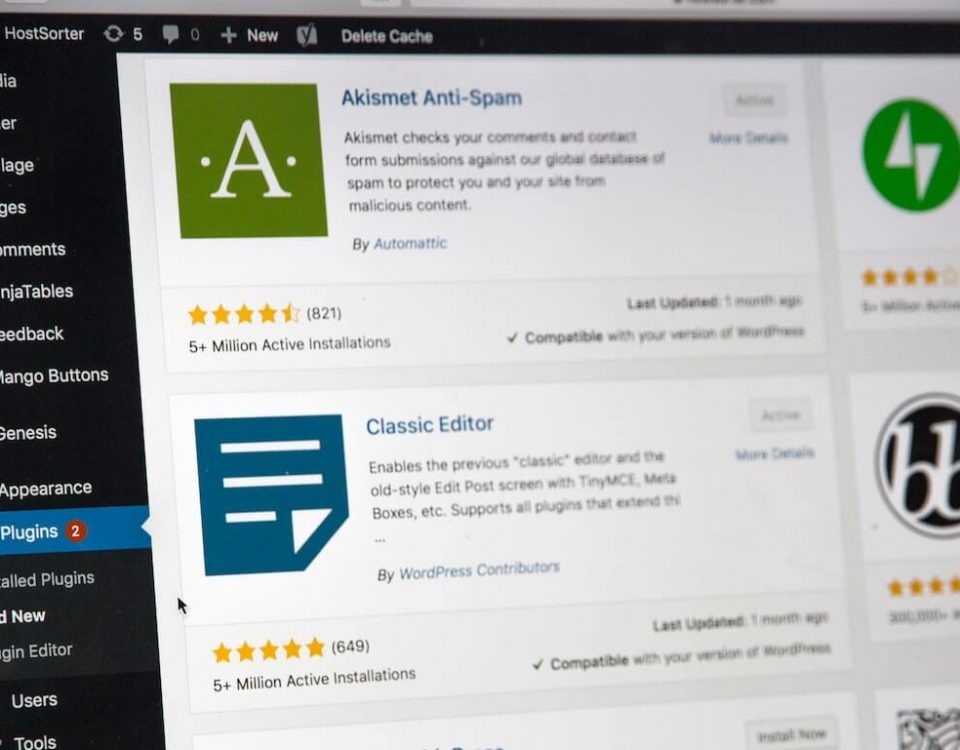The What, Why and How of Successful Business Blogging

Grow your business with Email marketing
November 30, 2015
Landing page is here to stay!
January 6, 2016“A Blog is a journal or a diary that is on the Internet”.
Why should you Blog?
What do I need to know to make the greatest impact?
Learn why blogging is good for your business, valuable to your customers and why you should start one now!
What is it?
A business blog is a powerful marketing tool, which allows you to provide news for your potential customers, current customers and partners about your products, services and industry trends. It is composed of a list of online articles. Blog posts usually include features like comments, social share buttons and links in order to increase user interactivity. It may also be referred to as a corporate blog or corporate web log.
Blogging is the act of writing a blog and content you create should be all about building trust, credibility and authority with your readers. Business blogging is a very simple and effective way to communicate with a targeted audience, but only if it is fully transparent and user friendly.
Why should you do it?
Through continuous, open, informal and personalized communication, the main purpose of the blog is to create new emotional connections or grow loyalty with your current list or target audience. A blog can build a dynamic community, which exchanges information, solutions, reviews and opinions about business related topics. There are significant benefits to blogging. Blogging as part of your online marketing strategy:
• Drives traffic to your website
• Converts traffic into leads
• Strengthens the image of your brand
• Establishes authority
• Compliments PR activities
• Drives long-term results
How it should be done?
Overall, companies that have blogs are perceived as open, honest and trustworthy. Many consumers use blogs as a source of information when making purchasing decision. Actually, 61% of U.S. consumers have made a purchase based on a blog post they read. To get the most out of your blog, leverage these steps:
1. Establish Blog Goals
To set the right goals, try to answer some of these questions – What is your reason for starting a blog? What do you want to accomplish with your blog? Who do you want to read your blog? In order to be realistic and achievable, your blog goals must be measurable, specific, relevant, attainable and timely. Set “doable,” stretch goals that will help you stay on the right track and give structure to your blogging activities.
2. Define your target audience
Blog content should be adjusted to different target groups to better satisfy their needs and generate more leads. It is not uncommon for successful companies to have more than one blog, depending on the areas of business they want to communicate. But if you want to have only one blog, you have to identify your ideal customer and write a blog that is useful and informative to that persona.
3. Create outstanding content
A blog should establish you as an expert in your market. To achieve that status, your blog content must be interesting, up-to-date and relevant to your industry. Consider having a variety of authors experts, analysts and various representatives of scientific and academic community contribute to your blog. This will help you be seen as a source of relevant information. Over the past few years, many companies have made corporate blogs where employees participate in creating content and express their opinions on topics relevant to the business. This has been shown to be an effective way to build credibility and trustworthiness.
Blogs are not used only for gaining credibility and leadership in a particular industry, but for strengthening the connection with consumers and building a positive image of the company. You can accomplish that by communicating with customers in a more personal and direct way.
Blog content should be written and communicated in a way that is understandable to all of its targeted readers. This means shifting from the formal writing style of press releases, and perhaps placing more detailed content in broader context than commercial news and articles. This communication tool is particularly suitable for publishing information that may not make its way into traditional media, but which is very important and engaging for your audience. It will also increase online shares with your readers’ friends, business partners and connections. How-to posts, list posts, controversial posts, interviews, contest or competition posts, prediction posts and beginner’s guides are great formats for posting information.
4. Posting regularly
Building a dedicated following is a long-term commitment and consistency is required for success. Be sure to establish a posting schedule that you can adhere to regularly so that your readers can consistently count on visiting your site for new, fresh, relevant, trending content. When your readers learn they can rely on your blog to be a source of new, fresh, useful information they will start visiting it regularly and recommend it to others.
5. Gather feedback through dialogue
The blog is a useful tool for gathering feedback. Companies with blogs send a message to readers that they are open for feedback and discussion. It can be very beneficial knowing what your customers want, like and don’t like about your products and services. Aallow your blog readers to comment. Promptly and truthfully answer all questions and concerns. Don’t delete the negative comments. Use them as an opportunity to be open and to meet your customers where they are. Use them to learn more about how your customer wants to be served. Before you know it, discussion that leads to a higher number of visits and ratings will be generated.
To avoid unnecessary backlash from negative comments, establish proper blog management. Proper blog management includes a good communication policy and timely, planful response to critical content.
6. Measure results
Without a statistical measure of your blogging progress, adding content to your blog on a regular basis can be pointless and a complete waste of time. Measuring these elements will help you track your blogging success:
• Visitors – The most basic blog measurement is the number of unique visitors. It is the count of people who are actually seeing your blog content. Be sure to measure the number of visits by individual blog posts as it will help you identify the content your target audience prefers most. Another equally important metric is the percentage of returning blog visitors. A high percentage of returning visitors means your blog content is satisfying readers’ needs.
• Social Shares – How many times readers comment on your blog post or share it via social media is an important indicator of whether your blog has high quality content or not. Over 40% of people measure the social influence of a blog by the number of social media shares it gets.
• Inbound Links site – When another website links to a page on your website it is called an inbound link. Search engines use inbound links as a method to determine how pages appear and rank in search engine results. Companies that blog have 97% more inbound links.
There is a lot to think about when it comes to developing and managing an effective blog. Most importantly, be sure to write like you are writing to your best customer – one person. This makes your blog believable and personal.
Content matters. Your blog content is critical to your search engine page ranking (SERPs) success. Be sure you are leveraging effective key words, phrases and related content that your ideal customer might be searching for. Your blog provides the content that your search engine optimization provider uses to improve your SERPs. It is the hub for your search engine optimization efforts.
Need help getting started? Give us a buzz. We’re happy to help.





